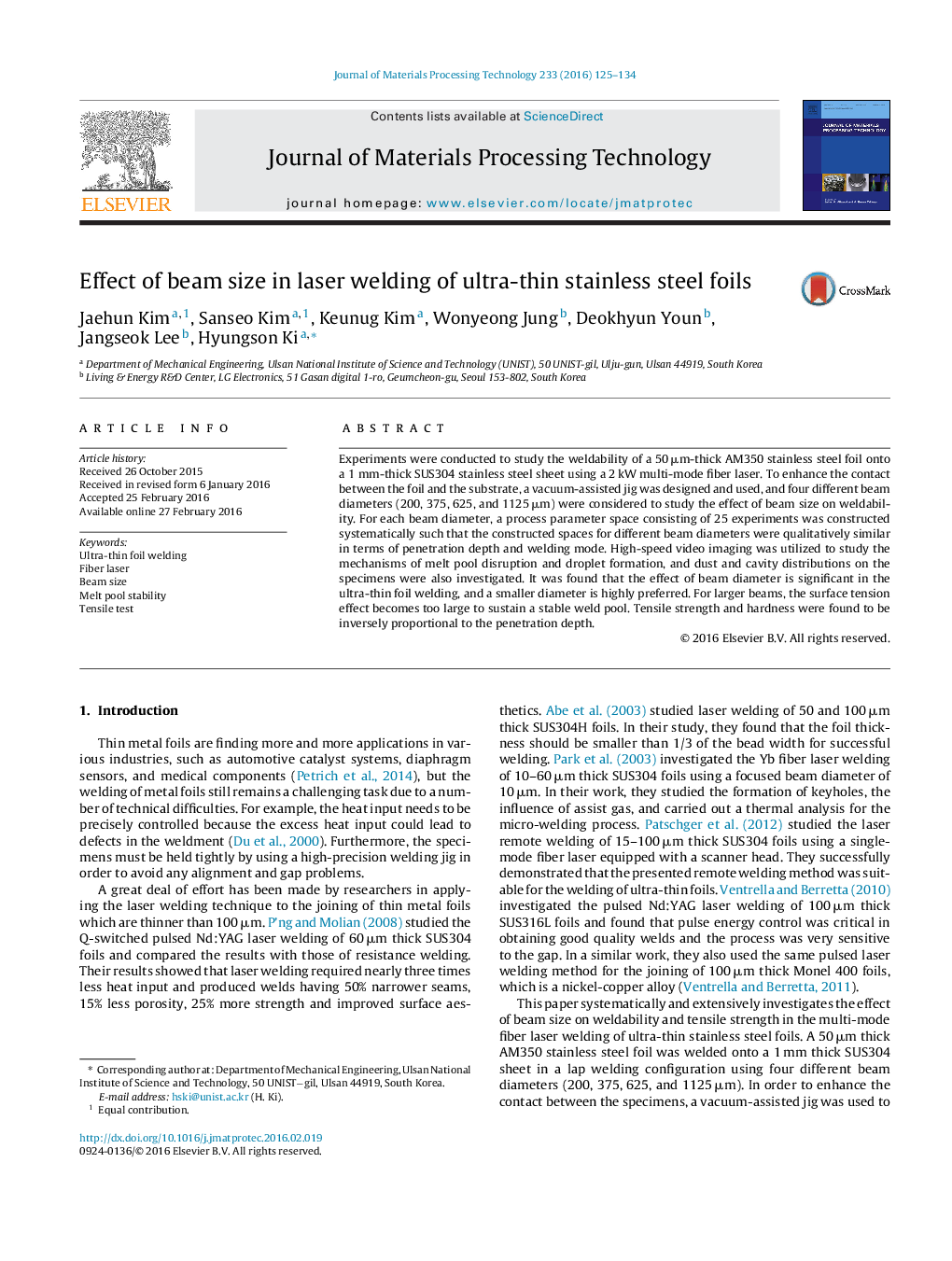| Article ID | Journal | Published Year | Pages | File Type |
|---|---|---|---|---|
| 795848 | Journal of Materials Processing Technology | 2016 | 10 Pages |
Experiments were conducted to study the weldability of a 50 μm-thick AM350 stainless steel foil onto a 1 mm-thick SUS304 stainless steel sheet using a 2 kW multi-mode fiber laser. To enhance the contact between the foil and the substrate, a vacuum-assisted jig was designed and used, and four different beam diameters (200, 375, 625, and 1125 μm) were considered to study the effect of beam size on weldability. For each beam diameter, a process parameter space consisting of 25 experiments was constructed systematically such that the constructed spaces for different beam diameters were qualitatively similar in terms of penetration depth and welding mode. High-speed video imaging was utilized to study the mechanisms of melt pool disruption and droplet formation, and dust and cavity distributions on the specimens were also investigated. It was found that the effect of beam diameter is significant in the ultra-thin foil welding, and a smaller diameter is highly preferred. For larger beams, the surface tension effect becomes too large to sustain a stable weld pool. Tensile strength and hardness were found to be inversely proportional to the penetration depth.
